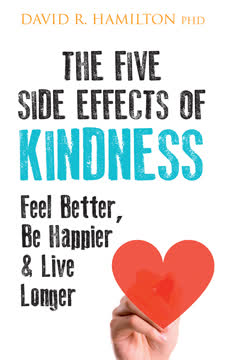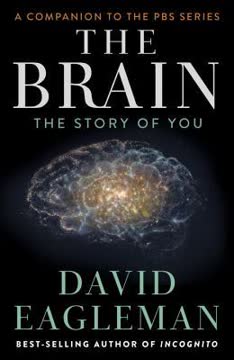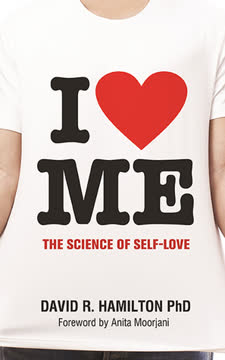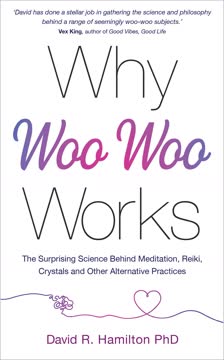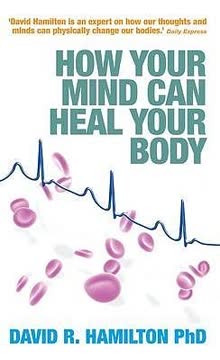Key Takeaways
1. Kindness Enhances Happiness for Both Giver and Receiver
Kindness makes us happier.
Reciprocal Happiness. Acts of kindness not only benefit the recipient but also significantly boost the happiness and well-being of the giver, creating a positive feedback loop. Studies show that performing acts of kindness leads to increased happiness levels, greater life satisfaction, and a stronger sense of well-being.
Scientific Evidence. Research consistently demonstrates the link between kindness and happiness. For example, studies where participants performed acts of kindness reported higher levels of happiness compared to control groups. This effect is observed across different age groups, from young children to older adults, highlighting the universal impact of kindness on happiness.
Practical Application. Incorporating small acts of kindness into daily life can lead to significant improvements in overall happiness. These acts can range from simple gestures like offering a compliment to more involved activities like volunteering. The key is to make kindness a conscious practice, integrating it into one's routine to reap its numerous benefits.
2. Kindness Protects the Heart Through Physiological Mechanisms
Kindness is Viagra for your arteries.
Cardioprotective Effects. Kindness has a direct, positive impact on cardiovascular health, primarily through the release of oxytocin, which helps to dilate blood vessels and lower blood pressure. This physiological response reduces the risk of heart attacks and strokes, making kindness a powerful tool for maintaining heart health.
Oxytocin's Role. Oxytocin, often referred to as the "love hormone," is released during acts of kindness and warm emotional contact. It causes the cells lining our arteries to relax, leading to vasodilation, which improves blood flow and reduces blood pressure. This process is crucial for preventing and even reversing cardiovascular disease.
Real-World Examples. The "Roseto Effect" illustrates the cardioprotective benefits of kindness and strong community bonds. Residents of Roseto, Pennsylvania, had significantly lower rates of heart disease due to their close-knit community and mutual support, highlighting the importance of social connections and kindness in maintaining heart health.
3. Kindness Slows Aging by Combating Key Age-Related Processes
Kindness is an antioxidant and an anti-inflammatory.
Combating Aging Processes. Kindness can slow down the aging process by addressing key factors such as muscle degeneration, inflammation, oxidative stress, and depleted nitric oxide levels. By promoting oxytocin release, kindness helps to regenerate muscle cells, reduce inflammation, and protect against free radical damage.
Telomere Protection. Studies have shown that practicing kindness and compassion can protect telomeres, the end caps on DNA strands that shorten with age. Longer telomeres are associated with slower aging and better overall health, suggesting that kindness can have a direct impact on longevity at the cellular level.
Immune System Boost. Kindness can also enhance the immune system, which tends to weaken with age. Witnessing or performing acts of kindness has been shown to increase levels of salivary immunoglobulin-A (s-IgA), an important component of the immune system, thereby improving the body's ability to fight off infections and diseases.
4. Kindness Strengthens Relationships Through Connection and Support
Kindness is relationship glue.
Foundation of Strong Bonds. Kindness is a fundamental element in building and maintaining strong, lasting relationships, whether romantic, familial, or platonic. It fosters trust, intimacy, and mutual respect, creating a supportive environment where individuals feel valued and understood.
Gottman's Research. John Gottman's research highlights the importance of positive interactions in relationships. The "magic ratio" of 5:1 (positive to negative interactions) indicates that successful relationships are characterized by a higher frequency of kindness, support, and affection compared to criticism and negativity.
Active-Constructive Responding. Shelly Gable's work emphasizes the significance of active-constructive responding, where partners enthusiastically support each other's good news. This type of response strengthens relationships by fostering positive emotions and a sense of shared joy, reinforcing the bond between individuals.
5. Kindness is Contagious, Creating Ripple Effects of Positivity
Kindness is the language that the deaf can hear and the blind can see.
Ripple Effect. Acts of kindness have a contagious effect, inspiring others to be kind and creating a ripple effect of positivity that extends far beyond the initial act. Witnessing kindness elevates the human spirit and motivates individuals to emulate the behavior they have observed.
Scientific Evidence. Research demonstrates that emotions and behaviors are contagious through social networks. Studies have shown that when one person performs an act of kindness, it inspires others to do the same, creating a chain reaction that can spread through multiple degrees of separation.
Real-World Impact. The story of the world's longest kidney donor chain illustrates the power of contagious kindness. A single altruistic act initiated a chain of 34 consecutive transplants, saving numerous lives and inspiring countless individuals to consider organ donation, highlighting the far-reaching impact of a single act of generosity.
6. Oxytocin: The Molecule of Kindness
It’s the ‘rightness’ of kindness and the connection that comes from it that feels so good.
The Chemical Basis of Connection. Oxytocin, often dubbed the "love hormone," plays a central role in the physiological and emotional responses associated with kindness. It is released during acts of generosity, compassion, and warm social interactions, fostering feelings of connection, trust, and empathy.
Physiological Benefits. Beyond its emotional effects, oxytocin has numerous physiological benefits, including reducing blood pressure, promoting vasodilation, and acting as an antioxidant and anti-inflammatory agent. These effects contribute to the cardioprotective and anti-aging benefits of kindness.
Practical Ways to Boost Oxytocin. Engaging in activities that promote oxytocin release can enhance overall well-being and strengthen social bonds. These activities include hugging, comforting others, supporting loved ones, and simply thinking fondly about positive relationships and experiences.
7. Gratitude Amplifies the Benefits of Kindness
Gratitude makes us happier too.
Reciprocal Relationship. Gratitude and kindness are interconnected, with gratitude often serving as a response to acts of kindness and, in turn, motivating further acts of generosity. Cultivating gratitude can amplify the positive effects of kindness, creating a virtuous cycle of well-being.
Scientific Support. Studies have shown that practicing gratitude can lead to increased happiness, reduced stress, and improved overall well-being. Individuals who regularly count their blessings tend to be more joyful, energetic, and attentive, and are also perceived as more thoughtful and kind by others.
Practical Application. Incorporating gratitude practices into daily life can enhance the benefits of kindness. This can involve keeping a gratitude journal, expressing appreciation to others, or simply taking time to reflect on the positive aspects of one's life and relationships.
8. Compassion: The Heart of Kindness
Compassion is like going into someone’s suffering, sharing it with them and wishing them relief from it.
Empathy in Action. Compassion is a deep awareness of the suffering of others, coupled with a desire to alleviate that suffering. It involves not only understanding another person's pain but also taking action to provide comfort, support, and kindness.
Vagal Tone and Compassion. Research has shown a strong link between vagal tone, a measure of the health and fitness of the vagus nerve, and compassionate behavior. Individuals with higher vagal tone tend to be more empathetic and more likely to engage in acts of kindness and support.
Cultivating Compassion. Practicing compassion can lead to increased happiness, improved self-esteem, and a greater sense of connection with others. This can involve engaging in loving-kindness meditation, volunteering, or simply making a conscious effort to be more understanding and supportive in daily interactions.
Last updated:
FAQ
What is "The Five Side Effects of Kindness" by David R. Hamilton about?
- Explores Kindness’ Hidden Benefits: The book reveals five powerful, scientifically-backed "side effects" of practicing kindness—happiness, heart health, slower aging, improved relationships, and contagiousness.
- Mix of Science and Stories: Hamilton combines personal anecdotes, real-life stories, and cutting-edge research to show how kindness impacts our minds, bodies, and communities.
- Practical and Inspirational: The book offers actionable advice, daily kindness challenges, and 50 specific acts of kindness to try.
- Redefines "Side Effects": Drawing from his pharmaceutical background, Hamilton reframes "side effects" as positive, unexpected outcomes of kind behavior.
Why should I read "The Five Side Effects of Kindness" by David R. Hamilton?
- Evidence-Based Benefits: The book is grounded in scientific studies, making a compelling case for kindness as a tool for personal and societal well-being.
- Immediate and Long-Term Gains: Readers learn how kindness can make them happier, healthier, and more connected, both instantly and over time.
- Practical Application: Hamilton provides concrete suggestions and challenges, making it easy to incorporate kindness into daily life.
- Uplifting and Motivational: The stories and research inspire readers to see kindness as a transformative force for themselves and the world.
What are the five side effects of kindness according to David R. Hamilton?
- Kindness Makes Us Happier: Acts of kindness boost mood, self-esteem, and overall life satisfaction.
- Kindness Is Good for the Heart: Kindness triggers oxytocin release, which protects the heart and lowers blood pressure.
- Kindness Slows Ageing: Kindness reduces stress, inflammation, and even impacts cellular aging processes.
- Kindness Improves Relationships: Kindness strengthens bonds, increases trust, and is the foundation of lasting relationships.
- Kindness Is Contagious: Kindness creates ripple effects, inspiring others to act kindly and spreading positivity through communities.
How does "The Five Side Effects of Kindness" by David R. Hamilton explain the science behind kindness?
- Hormonal Effects: Kindness increases oxytocin, dopamine, and serotonin, which are linked to happiness, bonding, and stress reduction.
- Cardiovascular Benefits: Oxytocin and nitric oxide produced by kindness dilate arteries, lower blood pressure, and protect against heart disease.
- Brain Changes: Practicing kindness and compassion can physically alter brain regions associated with empathy and positivity.
- Cellular and Genetic Impact: Kindness slows aging by reducing inflammation, oxidative stress, and protecting telomeres, the end caps of DNA.
What practical advice and methods does David R. Hamilton offer in "The Five Side Effects of Kindness"?
- 50 Acts of Kindness: The book lists specific, actionable kindness ideas for readers to try in daily life.
- Seven-Day Kindness Challenge: Hamilton encourages readers to perform a different act of kindness each day for a week, including at least one anonymous and one outside their comfort zone.
- Loving-Kindness Meditation: The book explains and recommends this meditation as a way to cultivate compassion and boost well-being.
- Self-Kindness and Boundaries: Hamilton emphasizes the importance of being kind to oneself and finding a balance to avoid burnout or resentment.
How does "The Five Side Effects of Kindness" by David R. Hamilton address the question of whether kindness is selfish?
- Motive Matters Less: Hamilton argues that even if we know kindness benefits us, the act is still valuable and not necessarily selfish.
- Mutual Benefit: Helping others often helps ourselves, especially in cases like volunteering to alleviate depression.
- Focus on Action: The book suggests not overthinking motives and instead encourages simply being kind.
- Kindness as Human Nature: Hamilton posits that humans are inherently kind, and benefiting from kindness is a natural part of the process.
What scientific studies and evidence does David R. Hamilton cite in "The Five Side Effects of Kindness"?
- Happiness Research: Studies show that performing acts of kindness increases happiness more than self-focused acts.
- Heart Health Studies: Research on oxytocin, the "love hormone," demonstrates its role in lowering blood pressure and protecting the heart.
- Aging and Telomeres: Studies link kindness, compassion, and supportive relationships to longer telomeres and slower biological aging.
- Contagion and Ripple Effects: Experiments reveal that witnessing or receiving kindness inspires further kind acts, spreading through social networks.
How does "The Five Side Effects of Kindness" by David R. Hamilton connect kindness to improved relationships?
- Foundation of Attraction: Kindness is the most desired trait in a partner across cultures, according to large-scale studies.
- Relationship Longevity: Research shows that a high ratio of positive (kind) to negative interactions predicts lasting relationships.
- Active-Constructive Responding: Being genuinely supportive and enthusiastic about others’ good news strengthens bonds.
- Kindness as Glue: Everyday small acts of kindness are what hold friendships, family, and romantic relationships together.
In what ways does "The Five Side Effects of Kindness" by David R. Hamilton show that kindness is contagious?
- Ripple Effect: Kindness inspires observers and recipients to "pay it forward," creating a chain reaction of positive actions.
- Scientific Proof: Studies demonstrate that kindness spreads up to three degrees of separation in social networks.
- Workplace and Community Impact: Kindness from leaders or colleagues increases job satisfaction, performance, and customer happiness.
- Children and Kindness: Even young children are more likely to act kindly after witnessing kindness, showing early social learning.
What are some of the most memorable stories or examples from "The Five Side Effects of Kindness" by David R. Hamilton?
- Wartime Compassion: A German soldier spares an enemy’s life, illustrating the power of compassion even in conflict.
- The Roseto Effect: A close-knit community with strong bonds and kindness experiences dramatically lower heart disease rates.
- The World’s Longest Kidney Donor Chain: One act of altruism sparks a chain of 34 kidney transplants across the U.S.
- Everyday Acts: Stories of helping strangers, supporting friends, and anonymous gifts highlight the profound impact of small kindnesses.
What are the key takeaways from "The Five Side Effects of Kindness" by David R. Hamilton?
- Kindness Benefits Everyone: Both giver and receiver experience measurable improvements in happiness, health, and relationships.
- Kindness Is a Health Practice: Regular acts of kindness can be as beneficial as diet or exercise for well-being and longevity.
- Small Acts Matter: Everyday kindnesses, not just grand gestures, create the fabric of strong communities and relationships.
- Kindness Is a Choice: Practicing kindness, even when it’s challenging or goes unnoticed, has lasting positive effects for individuals and society.
What are the best quotes from "The Five Side Effects of Kindness" by David R. Hamilton and what do they mean?
- “Kindness isn’t black and white – it’s multi-coloured.” — Kindness is complex, nuanced, and adaptable to every situation.
- “A hug a day keeps the cardiologist away.” — Simple acts of affection have real, measurable health benefits.
- “Kindness is the language that the deaf can hear and the blind can see.” (Mark Twain, quoted in the book) — Kindness transcends barriers and is universally understood.
- “If ever you’re in doubt as to what to do or in which direction to turn, be kind. For kindness is always the right thing, and it’s always the right way.” — Kindness is a reliable guide for action and decision-making in life.
Review Summary
The Five Side Effects of Kindness receives mostly positive reviews, with readers appreciating its scientific approach to kindness and its benefits. Many find it inspirational and easy to read, praising the practical suggestions and real-life examples. Some critics note repetitiveness and wish for more stories rather than studies. The book's emphasis on kindness as a tool for personal and societal improvement resonates with most readers, who feel motivated to incorporate more kindness into their daily lives. The 7-day kindness challenge is frequently mentioned as a valuable addition.
Similar Books
Download PDF
Download EPUB
.epub digital book format is ideal for reading ebooks on phones, tablets, and e-readers.
